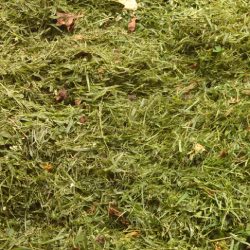
If you don’t have your own livestock, see if there is someone in your area that could use it. It’s easier to digest and provides essential nutrients. If you don’t use any chemicals on your lawn, your grass clippings can make a great source of food for cattle and sheep. They also make a great addition when mixed into soil for gardening or raised garden beds. Grass clippings work well as mulch due to their ability to keep moisture in and provide nutrients that your plants need to grow. Grass clippings are a great “green” source that can balance your compost. Every compost needs both “green,” containing nitrogen, and “brown,” containing carbon, materials in order for the process to work. Dry grass clippings will break down even quicker to improve your soil if mixed with dry fall leaves or bark mulch. You can add green grass clippings in thin layers on top of the soil around your flowers or let the grass dry out and use it as mulch. After three days, remove the clippings and use the remaining liquid to naturally fertilize plants. Grass clippings are fantastic mulch to add to flower beds.

During that time, essential minerals and nutrients, such as potassium, nitrogen and phosphorus, will be released into the water. Collect your grass clippings and steep them in water for about three days. Did you know that the annual amount of grass clippings produced by your lawn covers 1/3 of its feeding requirement? That’s right! By blowing your grass clippings back onto your lawn, you’re not only keeping them out of the Lagoon-you’re feeding your lawn and reducing your fertilizer use too! Once in the Lagoon, they begin to decay and contribute to the accumulation of muck in the bottom of the Lagoon.

Grass clippings, when blown into the street, sidewalks and driveways, are picked up by stormwater runoff during rain events and washed down storm drains into the Lagoon.


 0 kommentar(er)
0 kommentar(er)
